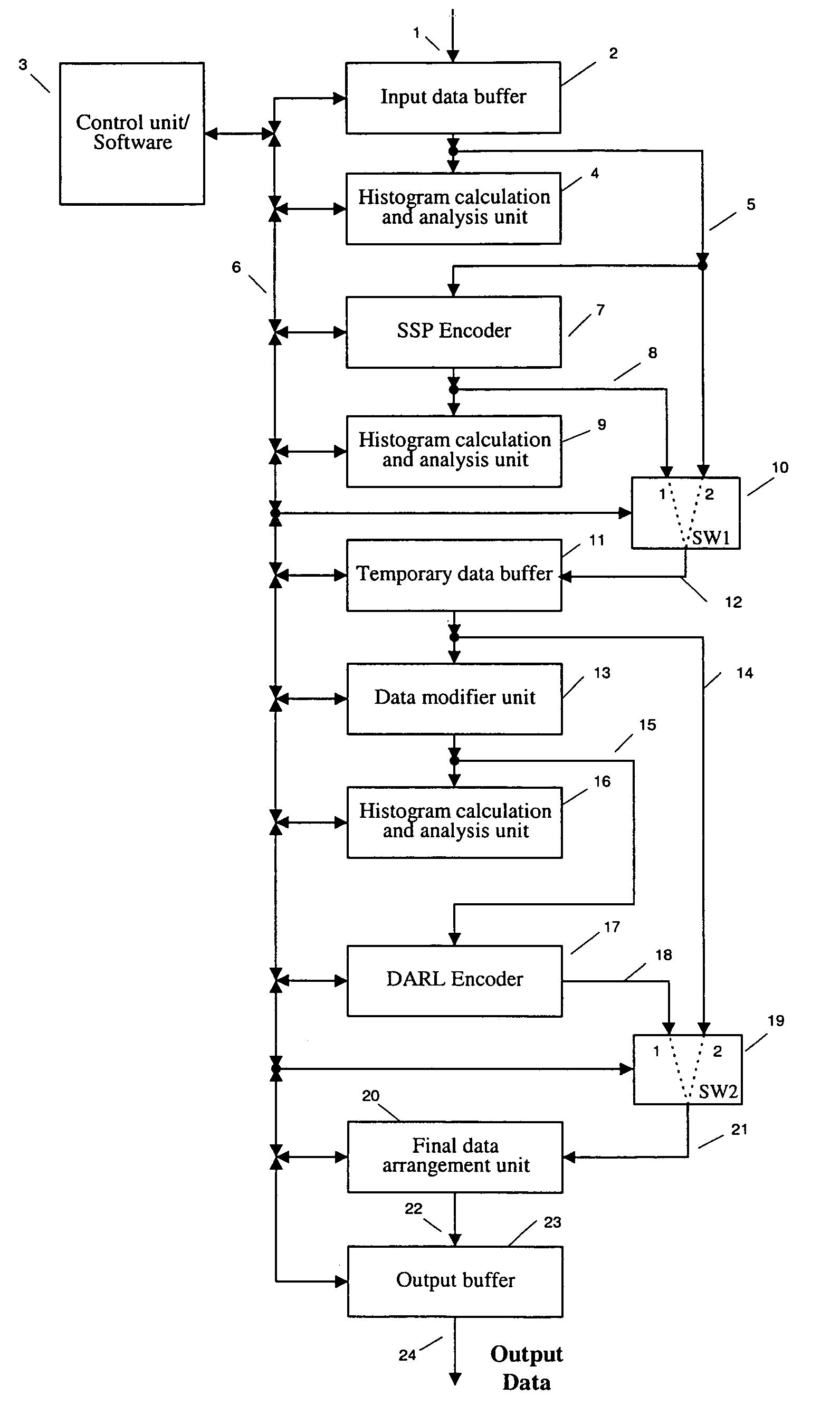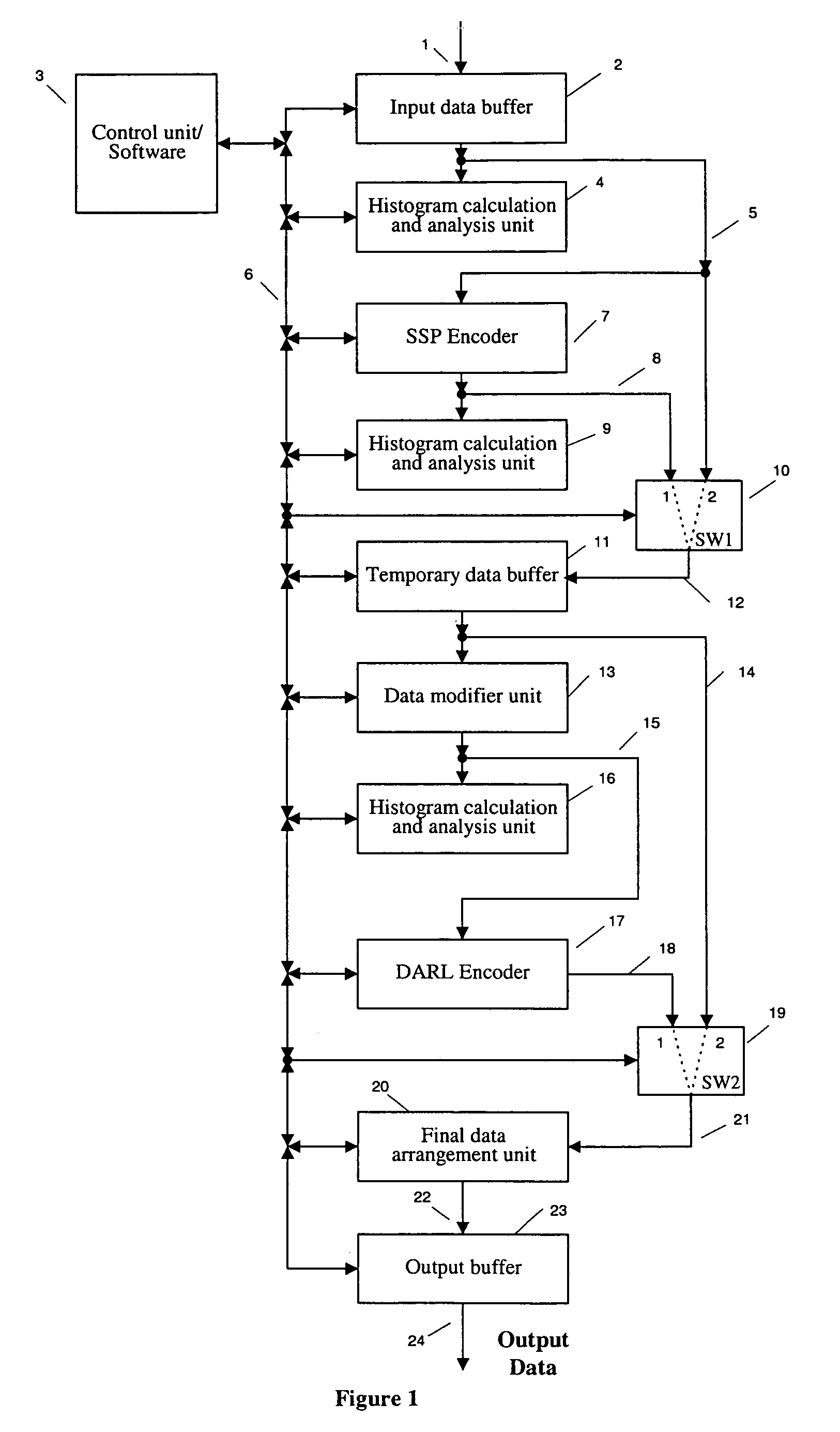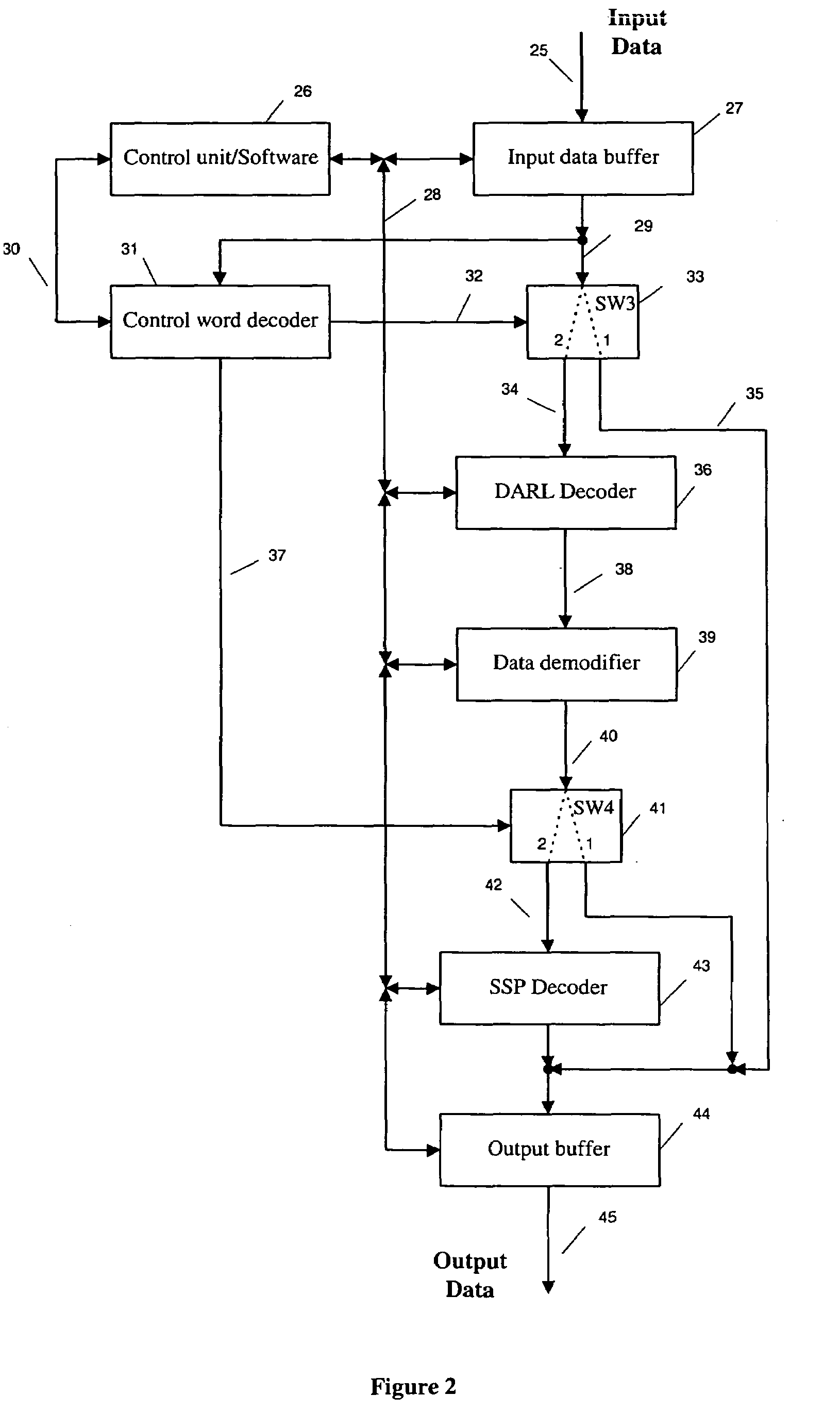Method and apparatus for lossless run-length data encoding
a run-length data and encoding technology, applied in the direction of electrical equipment, code conversion, etc., can solve the problems of not being able to achieve significant compression on data that is not of the form, not being able to guarantee optimum coding, and no known algorithm in this class can guarantee compression for all possible input data sets, etc., to achieve low computational complexity and reduce data volume.
- Summary
- Abstract
- Description
- Claims
- Application Information
AI Technical Summary
Benefits of technology
Problems solved by technology
Method used
Image
Examples
Embodiment Construction
[0037]The method for contents-based run-length encoding according to a preferred embodiment of the present invention is aimed at the compression of data, which is an N-dimensional sequence of n-bit binary words (numbers) with values in the range (−2n−1, 2n−1−1). The coded data that is obtained as a result is a sequence of n-bit words as well. The method, generally speaking, comprises two consecutive stages. In the first stage, the input data is transformed in order to increase the compression to be performed in the second stage. The compression performed in the second stage is based on a run-length coding method. The result is that the input data sequence is replaced by a shorter one, which consists of a header (service data) and data, compressed in accordance with the method.
[0038]The transformation performed during the first stage of the method is carried out without increasing the data volume to ensure that sequences of equal numbers are obtained with maximum length. In particula...
PUM
 Login to View More
Login to View More Abstract
Description
Claims
Application Information
 Login to View More
Login to View More - R&D
- Intellectual Property
- Life Sciences
- Materials
- Tech Scout
- Unparalleled Data Quality
- Higher Quality Content
- 60% Fewer Hallucinations
Browse by: Latest US Patents, China's latest patents, Technical Efficacy Thesaurus, Application Domain, Technology Topic, Popular Technical Reports.
© 2025 PatSnap. All rights reserved.Legal|Privacy policy|Modern Slavery Act Transparency Statement|Sitemap|About US| Contact US: help@patsnap.com



